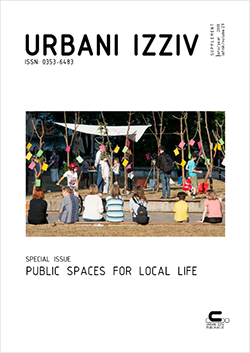Sharing responsibilities to regenerate publicness and cultural values of marginalized landscapes: Case of Alta Irpinia, Italy
Sharing responsibilities to regenerate publicness and cultural values of marginalized landscapes: Case of Alta Irpinia, Italy
Author(s): Stefania Oppido, Stefania Ragozino, Serena Micheletti, Gabriella Esposito De VitaSubject(s): Social Sciences, Rural and urban sociology
Published by: Urbanistični inštitut Republike Slovenije
Keywords: Non-core areas; landscape; community; bottom-up approach; action research;
Summary/Abstract: The paper deals with the issue of non-core areas in Italy by investigating the role that publicness and socio-cultural values of landscape can play in triggering development process in these contexts. Local communities have historically been the main producers of the cultural landscape. Nowadays, the importance of involving communities and sharing responsibilities together with policy makers and stakeholders is increasingly recognized. Their involvement is particularly valuable for processes that aim at safeguarding publicness and cultural values of places as well as for achieving social needs, carrying out economic activities, and promoting cultural assets. This research looks at Italian non-core areas in order to investigate the role of the “landscape community” in collaborative regeneration strategies. The aim is to highlight the power of landscape as a catalyst of civic activation and as the place in which to improve social practices for local development, competitiveness and attractiveness by using territorial capital and by strengthening territorial cohesion. For this purpose, Alta Irpinia, in Southern Italy, has been selected for empirical research. Preliminary evidence indicates the presence of bottom-up initiatives for reusing the historical Avellino-Rocchetta Sant’Antonio railway to promote the cultural landscape of the area and contrasting its marginalization. The main output of the ongoing research activity is the definition of the “action arena” to rearrange fragmented and conflicting perspectives and to start a collaborative process for local development in which the landscape could be recognized as driver.
Journal: Urbani izziv
- Issue Year: 29/2018
- Issue No: Supp.
- Page Range: 125-142
- Page Count: 18
- Language: English

